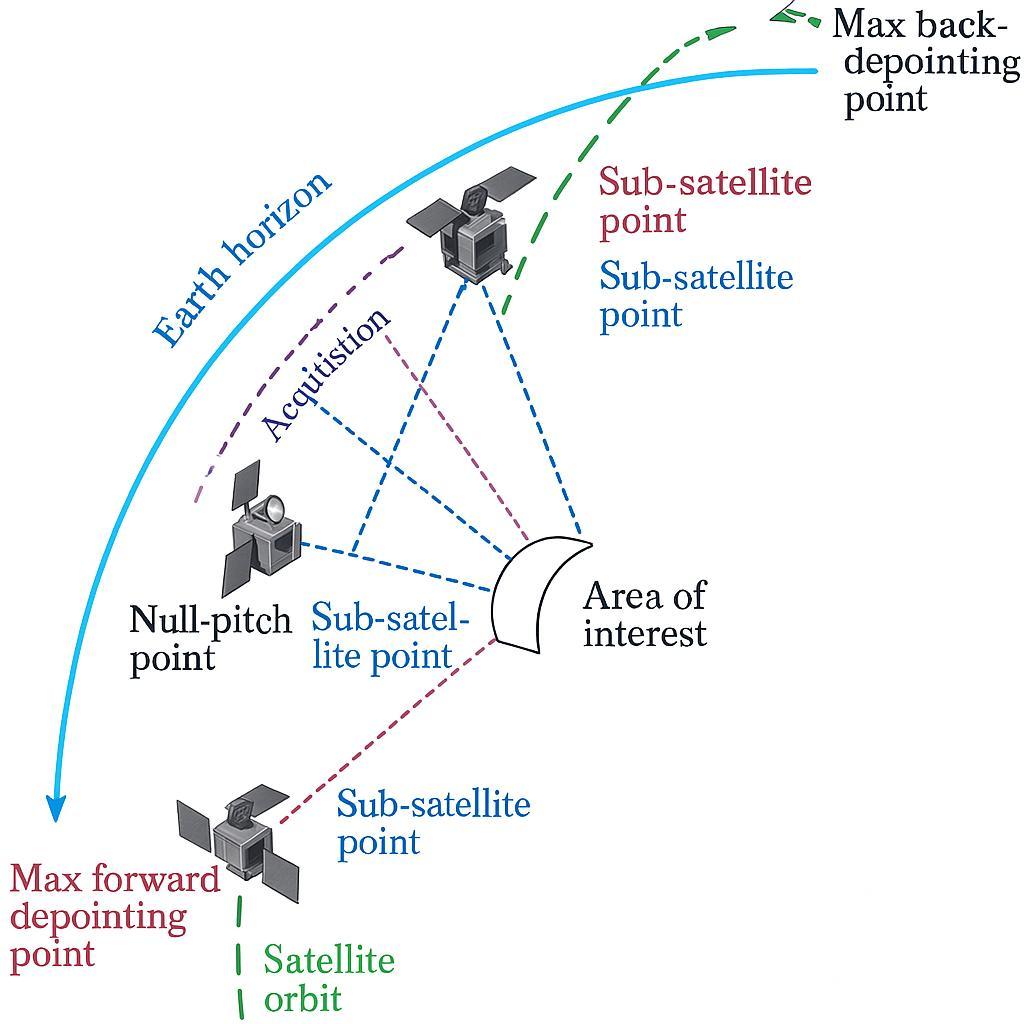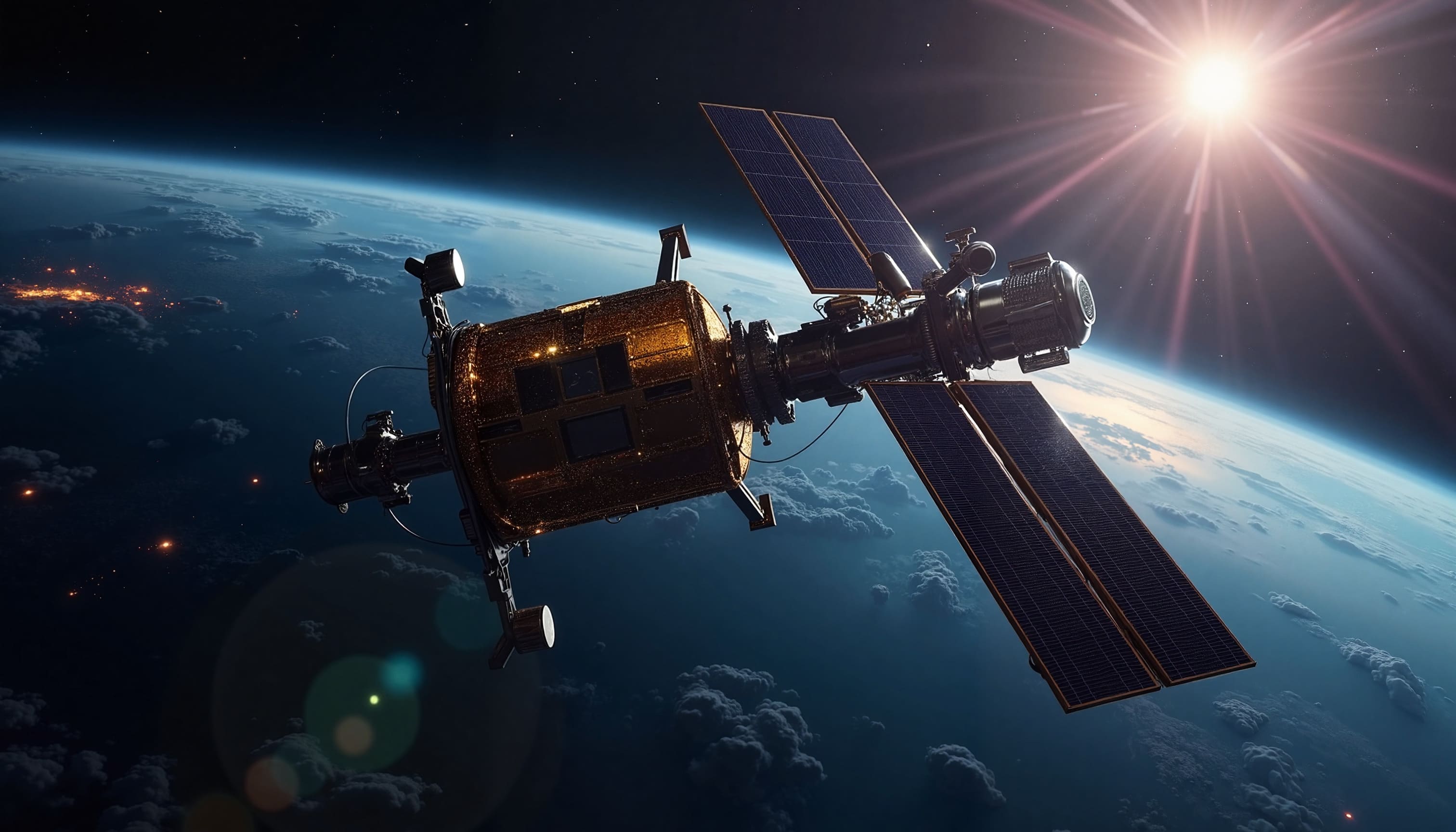The reliable functioning of Earth-orbiting satellites plays a critical role in modern infrastructure, powering everything from global communications and real-time navigation to scientific observation and Earth monitoring.
Mission planning for satellite imaging is essential for operational efficiency, especially as dynamic in-orbit instructions become increasingly complex.
With satellite tasking becoming more complex due to increasing data volumes and tighter response timelines, algorithmic optimization has emerged as a promising approach. However, as quantum computing evolves, it offers a new frontier in improving these optimization models. For a real-world example of how quantum models improve aerospace efficiency, see our quantum optimization for satellite mission planning use case.
This article explores how QIO algorithms can revolutionize satellite imaging mission planning by addressing time complexity, data scaling, and real-time constraints in task sequencing—extending even to scenarios involving swarms and satellite coordination via QIO.

Computational Challenges in Satellite Imaging Missions
Mission planning for imaging satellites is computationally intensive, and must determine the optimal order and timing for capturing a sequence of images across the globe.
The goal is to maximize the number of high-priority images captured within a fixed operational timeframe while considering strict orbital, maneuvering, and data transfer constraints.
In this context, each imaging request is associated with:
- A Data-Take Opportunity (DTO) window, within which the image must be captured.
- A median line, determining the geographic center of the target region.
- Acquisition duration, the continuous time required to take the image.
- Relaying time, which accounts for satellite rotation (maneuvering) between consecutive imaging requests, is important.
Satellites typically orbit Earth along the terminator—the line between night and day—performing up to 15 orbits per day. While in orbit, satellites must precisely rotate their camera within one degree per second to align with each target.
Efficiently managing these transitions—without violating time or angular constraints—is key to maximizing mission productivity.
For a deeper dive into simulation techniques used in orbit and payload management, explore optimizing satellite trajectories using quantum-enhanced models.
Problem Formulation for satellite imaging mission: Task Chaining, Constraints, and Quantum Algorithms for Complex Optimization
Satellite Imaging mission problems can be framed as an optimization task: maximize the number of completed high-priority imaging requests within given DTO windows and maneuvering capabilities.
In practice, multiple requests often overlap spatially and temporally, requiring intelligent sequencing to avoid conflicts and idle time.
Datasets examples:
- A single satellite scenario with a certain number of requests.
- A two-satellite scenario with more than 2000 imaging tasks, each prioritized on a scale of 1 to 4.
The mission planning algorithm must:
- Sort and sequence imaging tasks.
- Estimate maneuver durations between imaging points using satellite-based models.
- Compute acquisition and relaying times using Earth-Centered Inertial (ECI) coordinates.
- Chain feasible task sequences together, respecting time constraints and maximizing coverage through mission planning for satellite imaging using quantum-augmented sequencing strategies.
Quantum-Inspired Optimization: A Practical Advantage in HPC-powered simulation optimization
Traditional optimization methods like genetic algorithms (GA) and heuristics have been widely applied in satellite mission planning. However, their performance often degrades with increasing task volume and constraint complexity.
Quantum Evolutionary Algorithms in Aerospace; specifically our QIO approach offers a powerful alternative by simulating principles of quantum computation such as superposition and probability amplitudes on classical hardware, making it highly applicable to emerging use cases like adaptive drone defense systems.These methods effectively balance exploration and exploitation in the search space, enabling rapid convergence on near-optimal solutions—even in domains like adaptive drone defense systems, where deployments must adjust to evolving threats in real time.
Mathematical formulation:
This problem can be modeled in this way;
Binary decision variables:

The objective is to maximize the weighted sum of completed requests, minus penalties for violating maneuver or DTO constraints—a goal that aligns closely with the demands of AI-powered image processing workflows that rely on accurate and timely image capture.
Cost function:

Constraints are encoded directly into the model via penalty functions and discrete integer programming logic, allowing the optimizer to prune infeasible solutions quickly.
Initial testing of BQPhy’s QIO for the multi-satellite placement demonstrates that QIO outperforms classical genetic algorithms in both efficiency and scalability, enabling significantly improved satellite scheduling under high-demand operational constraints.
By leveraging quantum-inspired algorithms and space-flight dynamics, satellite operators can now:
- By leveraging quantum-inspired algorithms and space-flight dynamics, satellite operators can now:
- Maximize mission output within limited fuel and time constraints.
- Strategically prioritize imaging requests based on urgency and value.
- Adapt to evolving orbital environments with agility and precision—capabilities increasingly critical for time-sensitive missions like real-time drone swarm defense optimization.
Quantum-Inspired Evolutionary Optimization represents a transformative step in payload-centric mission simulations and optimized satellite imaging execution, enabling mission-driven aerospace optimization and agile, high-accuracy tasking across evolving space environments. As space becomes more congested and mission demands grow, quantum inspired evolutionary optimization algorithms offer a scalable, high-accuracy alternative to traditional heuristics.
With further refinement, these quantum-inspired approaches will not only enhance imaging satellite performance but also power time-critical applications like real-time drone swarm defense optimization, setting new standards in adaptability and computational excellence across the broader aerospace sector.




.png)
.png)
%20365382.png)




.svg)
.svg)
.svg)
.svg)